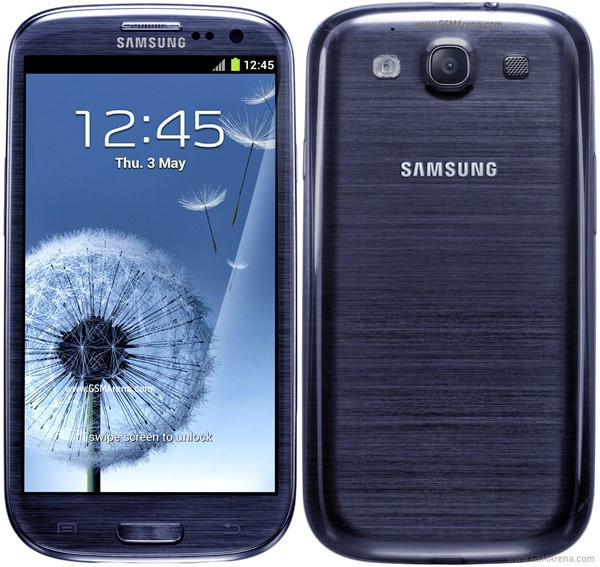Samsung Galaxy S3 vs Galaxy S Advance: Who Will Win Battle of Androids?
Can Galaxy S Advance Challenge the Mighty Galaxy S3?

Samsung's Galaxy S Advance is a sequel to the successful Galaxy S, which stole the limelight in the mid-range market until the advent of the S2. The arrival of the Galaxy S Advance could signal the end for the Galaxy S, featuring as it does, a dual-core processor and a SUPER AMOLED display that places it among high-end phones like the Note, the Nexus and the S2. The only downside is the lack of an option to upgrade to Android 4.0 (Ice Cream Sandwich ICS) and unproven track record of the NovaThor U8500 chipset. According to TechRadar, the Galaxy S Advance lacks the speed of the S2 - a noticeable fact, apparently, as one navigates through the seven customisable home screens or switching between the apps. Nevertheless, its dual-core processor is apparently more than capable.
The Galaxy S3, on the other hand, has captured more than 40 percent of the Android smartphone market and is poised to become the king of Androids, riding on the success of overwhelming sales records set during the first few days of its release.
Check out how the two leading Android smartphones stack up against each other:
Dimensions and Weight: The S3 has an ultra-slim form-factor and is only 8.6 mm thick. It measures 136.6 x 70.6 x 8.6mm and weighs 133g. It is thinner than the iPhone 4S (9.3mm) and the Galaxy Nexus (8.9mm).
The Galaxy S Advance, on the other hand, measures 123.2 x 63 x 9.7mm and weighs a mere 120g. Despite the extra thickness, its lightweight form-factor should appeal to most sceptics.
Display: The Galaxy S3 sports a massive 4.8in Super AMOLED display with a capacitive touchscreen running at 720p (720 x 1280 pixels) resolution and a pixel density of 306 pixels per inch (ppi). The S3 also adds second-generation damage-resistant Corning Gorilla Glass protection for its display.
By comparison, the Galaxy S Advance ships with a smaller 4.0in AMOLED capacitive touchscreen running at 480 x 800 pixels resolution and a pixel density of 233ppi.
Processor: The S3 boasts a powerful quad-core 1.4 GHz Cortex-A9 processor based on the Exynos 4 quad chipset and a Mali-400MP GPU for graphics applications, which is suitable for high-performance computing like gaming and multi-tasking. The S Advance features a dual-core 1GHz Cortex-A9 processor coupled with the same GPU as the S3. Its main processor is based on the NovaThor U8500 chipset whose performance record is yet unproven.
Memory and Storage: The Galaxy S3 ships with 1GB of RAM and supports three versions of internal storage - 16/32/64 GB. The Galaxy S, on the other hand, ships with 768MB of RAM and 2GB ROM, in a single 16GB internal storage model. The S3 offers microSD expansion support up to 64GB while the S Advance is limited to 32GB.
Operating System: The Galaxy S Advance comes loaded with Android 2.3.6 (Gingerbread), for which upgrades to ICS have yet to be announced. In comparison, the Galaxy S3 ships with Android 4.0.4 (the latest version of Ice Cream Sandwich) factory-installed.
Camera: The Galaxy S3 has a powerful eight megapixel rear camera while the S Advance supports a five megapixel primary camera. Both the S3 and the Galaxy S Advance come with a few common camera tweaks such as auto-focus, LED flash, geo-tagging, touch focus, face and smile detection. The former supports 1080p video recording capability at 30fps (frames per second) while the latter offers 720p video recording at 30fps.
The S3 features a decent 1.9 megapixel front-facing camera for video calls, while the successor to the Galaxy S sports a low-powered 1.3 megapixel secondary camera. The S3 camera also supports special functions such as simultaneous HD video and image recording besides image stabilisation.
Connectivity: The Galaxy S3 offers Wi-Fi 802.11 a/b/g/n, DLNA, Wi-Fi Direct, Wi-Fi hotspot, Bluetooth v4.0 with A2DP, EDR. Its 4G connectivity speeds are HSDPA 21Mbps and HSUPA 5.76Mbps. The Galaxy S Advance has similar connectivity options - Wi-Fi 802.11 a/b/g/n, DLNA, Wi-Fi hotspot, Bluetooth v3.0 with A2DP and HS. It offers 3G download connectivity speeds up to 14.4Mbps on HSDPA and upload speeds up to 5.76Mbps on HSUPA network bands. Both the S3 and the S Advance feature Near Field Communication (NFC) capability, wherein the former comes pre-installed with NFC and the latter ships NFC ready.
Battery: The Galaxy S3 is powered by a massive 2100mAh Li-Ion battery that is rated to deliver up to 590 hours of standby time on 2G and up to 790 hours on 3G networks. The battery also delivers an impressive talk time of approximately 22 hours on 2G and 12 hours on 3G networks. The Galaxy S Advance, in comparison, features a weaker Li-Ion 1500mAh battery rated to provide up to 570 hours of standby time or up to 15 hours of talk time over 2G, and up to 550 hours of standby time or about 7 hours of talk time over 3G.
© Copyright IBTimes 2024. All rights reserved.






















